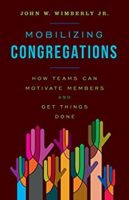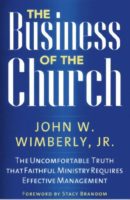
The “go it alone” model of congregational life is dead. That’s my takeaway from a recent conversation with Rabbi Aaron Bisno, senior rabbi at Rodef Shalom Congregation in Pittsburgh. He is convinced, and I agree, that congregations that insist on going it alone it will be dead in due time, as well.
Aaron looks at the current context for ministry through a very practical lens. Given the new tools we have and the deteriorating state of congregations, he sees a necessity and opportunity to redesign the model for ministry. He invites us to think about what each clergyperson and congregation do best and try to weave those skills into a shared cloth rather than multiple, individual garments.
Competition or Collaboration?
John: Rabbi Bisno, thanks for taking the time to talk a bit about the context in which congregations are operating these days as well as the opportunities the context will spawn. I am particularly interested in your insights that the time have come for congregations to break out of a competitive mindset in which they view one another as a threat to their existence (competing for new members, community recognition, etc.).
Aaron: With all due respect to every congregation and the clergy who have toiled in their vineyards, the fact that our congregational landscape looks the way it does is the results of our history. Time was it made sense to establish congregations where they are today. It made sense to budget for staff and programs as we did in years gone by. It even made sense to assert how distinct each parish and pulpit was one from another; after all, there were “plenty of Jews to fill the pews.”
But today it is pure folly to believe that any given congregation – excepting sui generis examples in major cities or boutique locales – can go it alone. Don’t get me wrong. Let’s wish everyone well. But I simply do not believe any single congregation can afford to indulge the idea that they can solve their own challenges if they insist on working solo.
The truth is we need one another. And not just to create efficiencies or economies of scale. The goal is not and cannot be to turn congregations into one-stop-shopping, big-box stores. But by pulling together and leveraging our collaboration – we can increase the value proposition for everyone.
Consider: No one congregation can possibly provide for all the needs of all its members. But by sharing our expertise and resources (i.e.. cross-listing services and courses) and leveraging the potential of clergy, especially, we can achieve great things on behalf of God’s people. To do our work well and to leverage our respective strengths, we need one another.
Better Together
For example, instead of every rabbi and pastor simultaneously preparing weekly, if not daily, on-line services and sermons, imagine what could happen if the clergy that weren’t on the pulpit devoted themselves to pastoral care, for example… Of course, this requires that we play to our strengths. As long as one doesn’t care who gets credit, we can get a lot more done by working together.
The alternative, of course, is continued inefficiency and poorer outcomes. But even worse, if we don’t start working in concert – that is, if we don’t start seeing our fates as linked, congregations will continue to squander their resources and, in time, will undermine the confidence & goodwill of our erstwhile members and would-be future donors.
On the other hand, once congregational leadership and clergy recognize and act on what all of the unaffiliated and “nones” already understand implicitly, namely, that our congregations are products of history – not accidents of history but, rather, are reflections of an earlier era – we can see beyond the competitive structure of our religious communities and, working together, we can bring people to believe (and invest!) in “the old time religion” expressed in a new, shared set of dreams and visions. If you will, it’s a story of old wine in new bottles. Or, if you will, its bottling and sharing old wine via a completely re-imagined supply chain.
We Could Be Anywhere
John: As one example of how dramatically things have changed, a rabbi told me that he performed a bar mitzvah while he was sitting in a hotel room. He put up a zoom background and no one was the wiser. What does it mean for us clergy that we can operate totally virtually? What are the dangers? The benefits?
Aaron: Ha! That was me. And it was a strange realization that I could be anywhere – working remotely and with a virtual background on zoom or some other meeting site – you can literally, not just be at home where many of us have made offices… You can be anywhere. Remember how we used to joke about people who checked email from the beach? And then we laughed when people used the virtual background with the swaying palm trees?
We’ve come full circle. Having collapsed geography and time, not only can people access our services anywhere and at any time, and not only can we share everything we do with everyone else both in real time and asynchronously, but now we realize that just as people who once worked in our buildings can work remotely, so can we as clergy be beamed in from anywhere.
Of course, this is, at once, an amazing insight and a terrifying realization. We can populate our services and program calendars with all types of talent from anywhere in the world and, too, we can get our own respective message out to a much wider audience than we could have possibly ever reached before. And we can – so long as we rely on virtual connections – all be replaced by a better-resourced, high-production-value, more business-savvy neighbor up the block or on the other side of the country.
Which is, why we all need to be working together rather than at odds.
Living in the Future
John: What is the single biggest thing that has changed or is changing today in the lives of congregations and clergy?
The single biggest change? It’s a two-fer. In the wake of the pandemic, wherein everyone all-but-simultaneously shifted from in-person to on-line gatherings, we effectively collapsed both distance and time. What this means is that we can be anywhere instantly, and we can do anything we want whenever we want. The truth is, of course, we’ve had these abilities for a while. Zoom isn’t new, webinars and streaming video have been with us for a while. But when everyone went virtual overnight, together we created a new reality. And that changed everything.
We used to joke, the future is here, it just isn’t evenly distributed. What’s different today is we are all living (and learning how to live and work and worship) in the future in real time.
By now everyone has been to “their niece’s bat mitzvah in Houston,” by which I mean everyone has “attended” services at another congregation across the country or somewhere else in the world, or we have been present for a wedding or a funeral via FaceTime or have been able to watch a service or listen to a sermon or share in a ceremony asynchronously (after the fact) on the congregational website or YouTube channel. And the truth is, though we tell ourselves that such non-physical interactions are sub-optimal, they also satisfy.
The implications for what this means for bricks-and-mortar congregations and congregational movements writ large is immense & I fear we don’t yet appreciate the magnitude of the changes coming our way.
John: Rabbi, thank you so much for this conversation. Your insight that we need to think collectively about how to engage people spiritually rather than congregation-by-congregation is prophetic. The competitive model, which certainly dominated my forty years in ministry, is doomed in this age. If we try to go it alone, many congregations will die one at a time. And, of course, this is already happening.
John Wimberly is an experienced pastor and consultant. As a consultant, he has worked with congregations and judicatories on strategic planning, staff designs for the 21st century, and congregational growth as well as financial and administrative management. He has MBA, MDiv, and PhD (theology) degrees. His books focus on effective management and leadership. John believes congregations can have a bright future!



